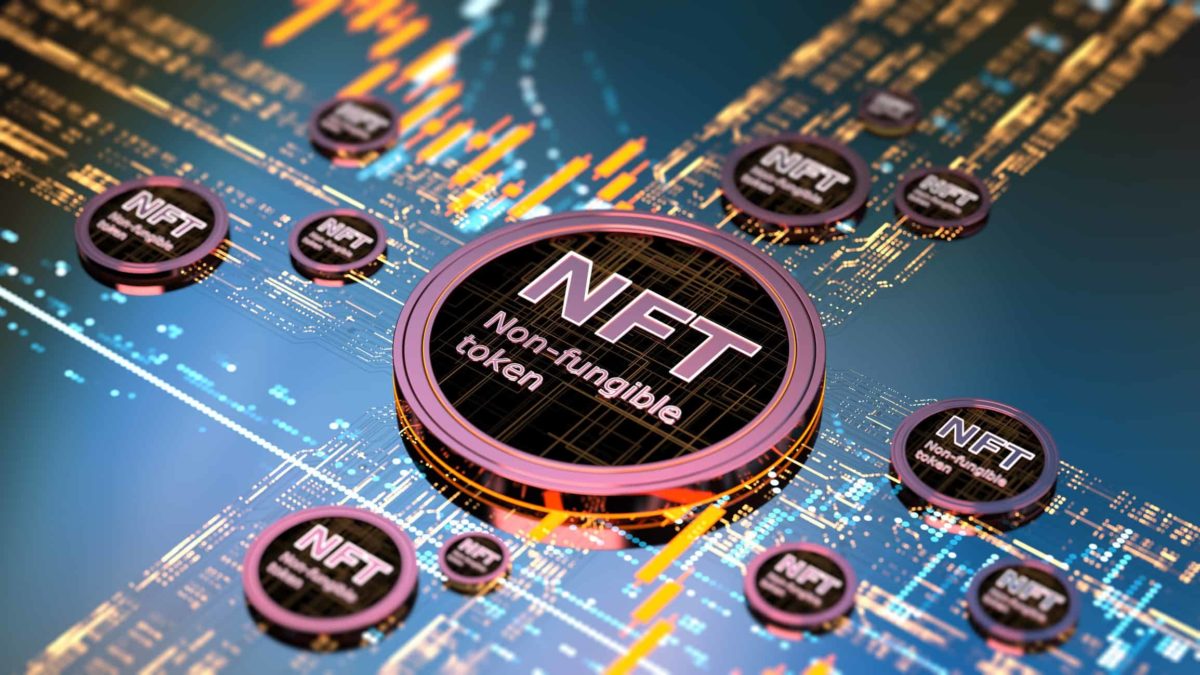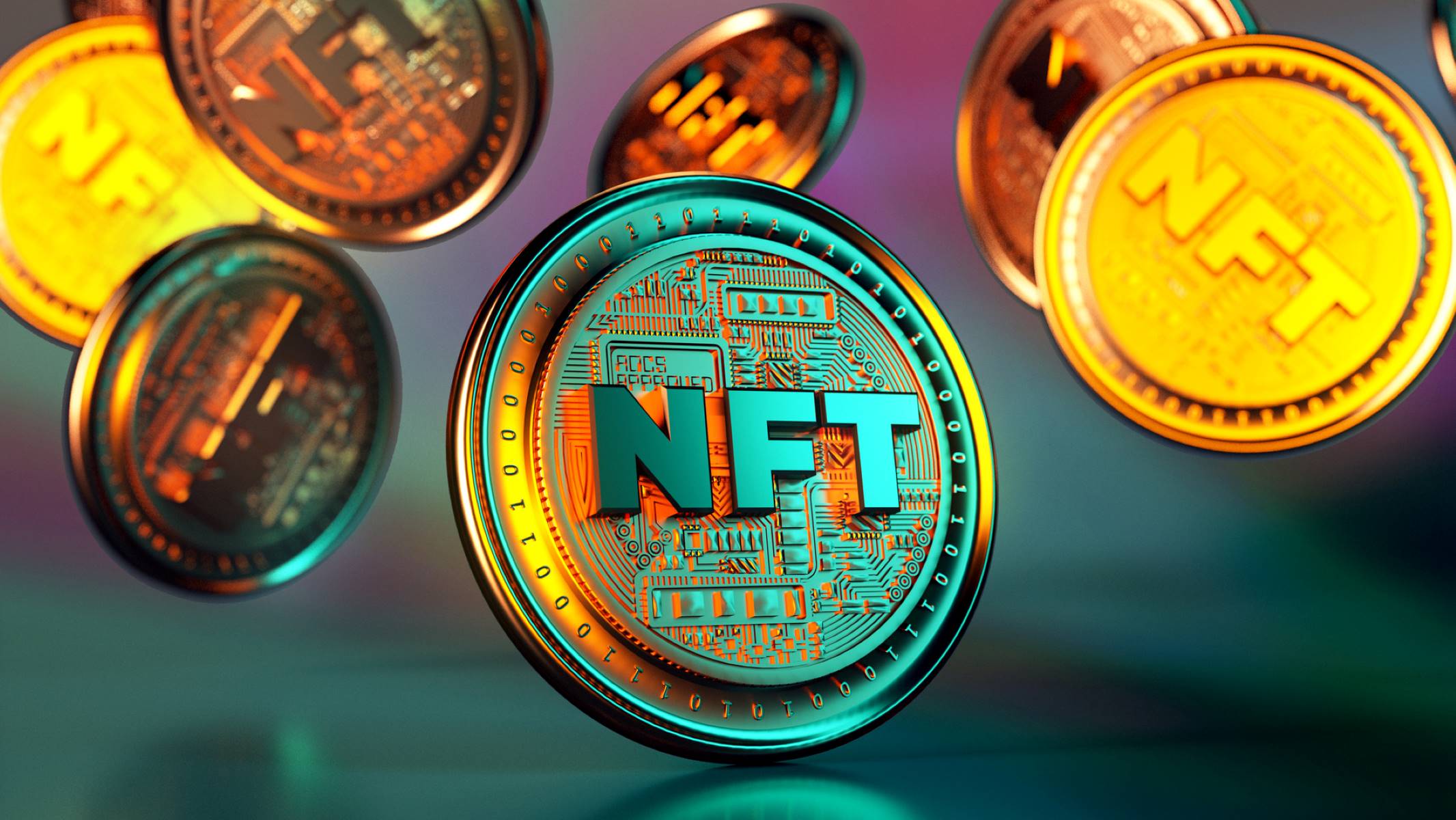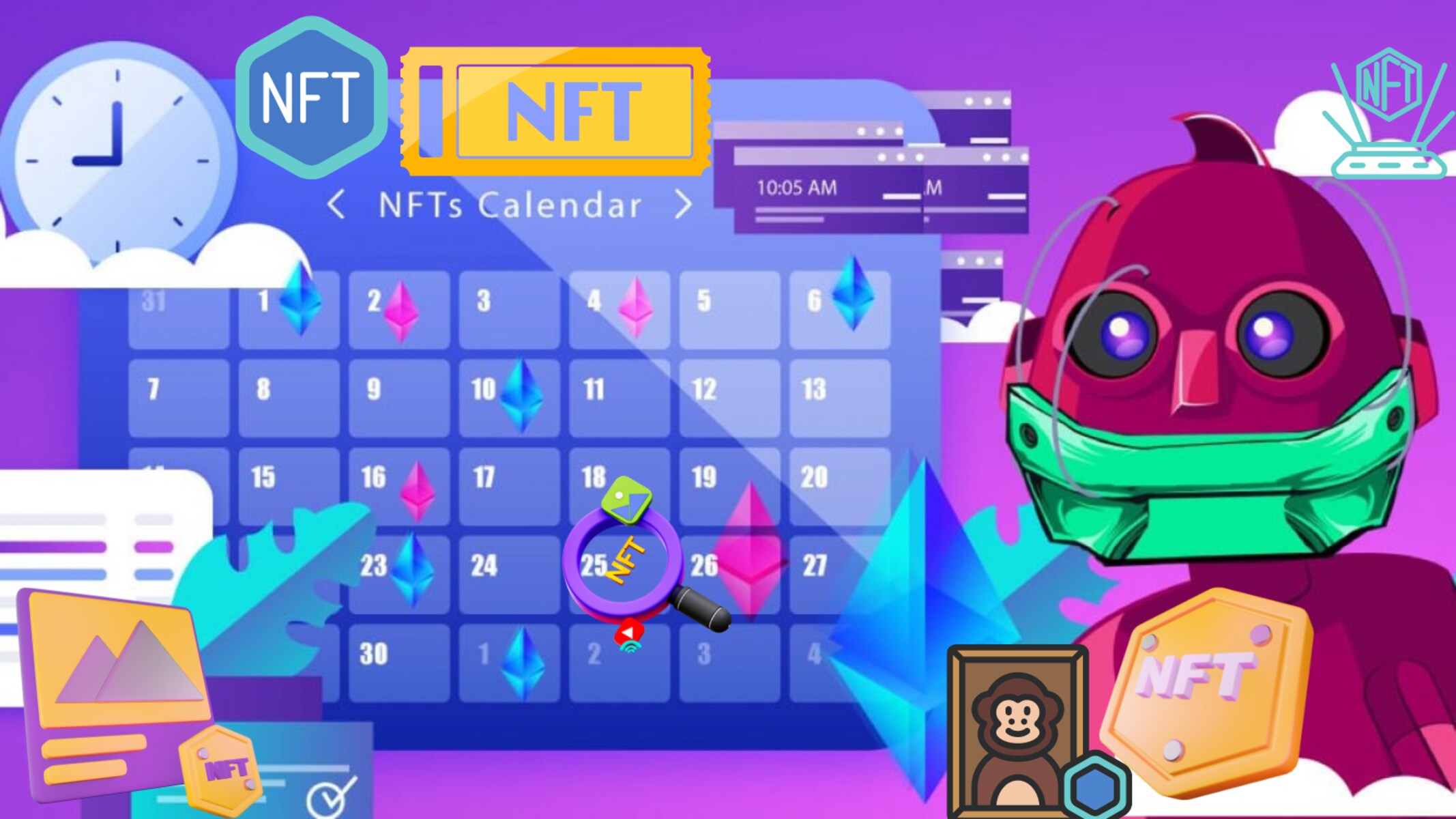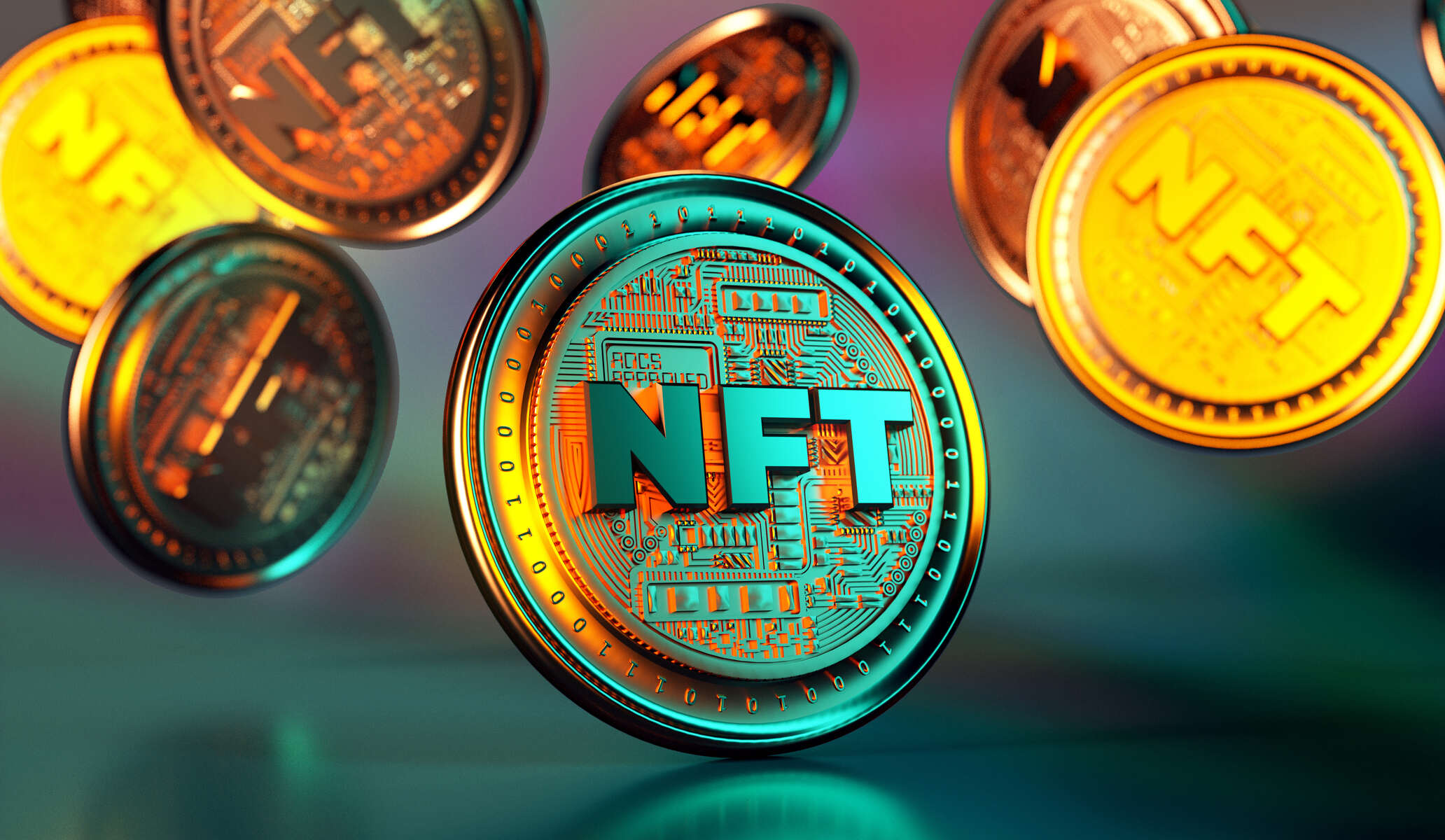What Is an NFT Crypto
An NFT, or Non-Fungible Token, is a type of cryptocurrency that represents a unique digital asset. Unlike traditional cryptocurrencies like Bitcoin or Ethereum, which are interchangeable and can be exchanged on a like-for-like basis, NFTs are indivisible and cannot be exchanged on a one-to-one basis.
Each NFT is a one-of-a-kind digital token that is stored on a blockchain, typically on the Ethereum blockchain. This blockchain technology ensures the authenticity, scarcity, and provenance of the NFT, making it a valuable and verifiable digital asset.
NFTs can represent a wide range of digital or tangible items, including artwork, music, videos, virtual real estate, collectibles, and more. Essentially, NFTs allow creators to tokenize and sell their work, giving them a unique way to monetize their digital creations.
One key feature of NFTs is their immutability. Once an NFT is created and added to the blockchain, it cannot be edited, altered, or deleted. This provides both artists and collectors with a level of security and permanence for their digital assets.
Another important aspect of NFTs is the ability to prove ownership. Every NFT has a unique digital signature that identifies the owner of the token. This ownership can be easily tracked and verified on the blockchain, providing a transparent and decentralized system for buying, selling, and trading NFTs.
The popularity of NFTs has skyrocketed in recent years, with artists, creators, and collectors embracing this new form of digital ownership. The concept of owning a digital asset and being able to trade it freely has opened up a world of possibilities for artists and collectors alike.
While NFTs have gained significant attention in the art world, they have also made an impact in industries such as music, gaming, sports, and even virtual real estate. The unique nature of NFTs allows for new revenue streams, increased accessibility, and enhanced fan engagement.
In summary, NFTs are a form of cryptocurrency that represent unique digital assets. They are stored on the blockchain, ensuring authenticity, scarcity, and provenance. NFTs have revolutionized the way artists, creators, and collectors monetize and trade digital assets, opening up new opportunities and possibilities in various industries.
Introduction
The world of cryptocurrencies has witnessed a groundbreaking innovation called NFTs, or Non-Fungible Tokens. These unique digital assets have been making headlines and capturing the attention of artists, creators, collectors, and investors alike. But what exactly are NFTs, and why are they becoming such a phenomenon in the digital world?
At its core, NFT stands for Non-Fungible Token, with “non-fungible” contrasting with “fungible” – the characteristic of standard cryptocurrencies like Bitcoin and Ethereum. While Bitcoin or Ethereum can be exchanged for an equal value without any distinction, NFTs are unique and cannot be traded on a one-to-one basis. Each NFT possesses its own distinct value, characteristics, and identity.
One of the defining features of NFTs is their implementation on blockchain technology, with the Ethereum blockchain being the most widely used platform for creating and trading NFTs. Blockchain technology ensures that each NFT is assigned a unique digital signature, verifying its authenticity, ownership, and transaction history. This provides an unparalleled level of transparency, security, and verifiability for digital assets.
The concept of NFTs has revolutionized the art world. It has empowered artists to tokenize their creations and sell them directly to collectors, bypassing traditional intermediaries. This newfound ability has opened up new avenues for artists to monetize their work, establish their value, and create a direct connection with their audience.
However, NFTs are not limited to the art industry alone. They have permeated various sectors, including music, gaming, sports, and even virtual real estate. NFTs have unleashed a wave of possibilities and opportunities, enabling creators to offer unique digital experiences, ownership rights, and limited edition collectibles.
In this article, we will delve deeper into the world of NFTs, exploring their definition, functionality, benefits, and applications. We will also discuss the emergence of NFT marketplaces and the potential for investing in these digital assets. So, join us as we embark on a journey into the fascinating realm of NFTs and discover the transformative power they hold.
Definition of NFT
An NFT, or Non-Fungible Token, is a unique digital asset that represents ownership or proof of authenticity for a particular item or piece of content. Unlike traditional currencies or cryptocurrencies, which are interchangeable and have the same value, each NFT is distinct and cannot be exchanged on a one-to-one basis. Think of NFTs as digital certificates of ownership for digital or physical assets.
What sets NFTs apart is their association with blockchain technology. NFTs are built on blockchains, such as Ethereum, which provide a decentralized and transparent ledger for recording transactions. The blockchain ensures that each NFT is assigned a unique identifier, verifying its authenticity, ownership, and provenance.
These digital tokens can represent a wide range of assets, including but not limited to artwork, music, videos, virtual real estate, collectibles, and more. It allows creators and collectors to tokenize and trade these assets on various marketplaces.
One of the key aspects of NFTs is their indivisibility. While cryptocurrencies like Bitcoin can be divided into smaller units, NFTs cannot. Each NFT is a whole and cannot be broken down into smaller parts. This means that the uniqueness and value of an NFT reside in its entirety.
The value of an NFT is determined by a combination of factors, including the demand for the underlying asset, the scarcity of the NFT, the reputation of the creator, and the overall market dynamics. Since NFTs are unique and backed by blockchain technology, they provide a high level of authenticity and ownership verification, which adds value and desirability to the digital asset.
It is essential to note that owning an NFT does not grant copyright or intellectual property rights over the underlying content. The creator retains those rights unless explicitly transferred as part of the NFT transaction. Rather, owning an NFT represents ownership of the unique token that represents the digital asset.
In summary, an NFT is a unique digital asset that represents ownership, proof of authenticity, and verifiability for a specific item or content. NFTs are built on blockchains and cannot be exchanged on a one-to-one basis. They have gained popularity in various domains, offering new possibilities for creators, collectors, and investors to participate in the digital economy.
How NFTs Work
Understanding how NFTs work requires exploring the underlying technology that powers them, namely blockchain. NFTs are created, stored, and traded on blockchain platforms, with the Ethereum blockchain being the most commonly used for NFT transactions.
When an artist or creator wants to tokenize their work, they create an NFT by attaching a unique digital signature to the asset. This digital signature guarantees the authenticity and uniqueness of the NFT. This process is often referred to as minting an NFT.
Once minted, the NFT is added to the blockchain, essentially becoming a permanent and immutable record. This record includes information about the creator, metadata about the asset, and details regarding its ownership history and transactional data.
Ownership of an NFT is determined by the ownership of the private key associated with the particular token. This key is securely stored in a digital wallet, and only the owner of the key has the authority to transfer or sell the NFT.
Blockchain ensures the transparency and security of NFT transactions. Every transaction involving an NFT is recorded on the blockchain, creating an unchangeable public ledger. This provides a transparent and verifiable history of ownership, allowing both creators and collectors to track the provenance and ownership of an NFT.
Additionally, the blockchain eliminates the risk of counterfeit or fake NFTs. Each NFT has a unique digital signature that cannot be replicated or tampered with. This ensures that the NFT is authentic and not duplicated, giving both creators and collectors confidence in the ownership and value of the digital asset.
When it comes to buying or selling NFTs, various marketplaces facilitate these transactions. These platforms serve as a marketplace for creators to list their NFTs for sale, and collectors to discover, purchase, and trade NFTs. These marketplaces typically charge a fee or commission for facilitating the transactions.
Once a buyer is interested in acquiring an NFT, they can make a bid or purchase it at a fixed price. If the seller accepts the offer, the ownership of the NFT is transferred to the buyer. This transaction is recorded on the blockchain, updating the ownership information and providing a clear record of the NFT’s ownership history.
Overall, NFTs operate on a decentralized and transparent system, thanks to blockchain technology. The minting, ownership, and transfer of NFTs are logged on a public ledger, ensuring the authenticity and provenance of these digital assets.
Blockchain Technology and NFTs
Blockchain technology plays a crucial role in the development and functionality of NFTs. It provides a decentralized and transparent platform for creating, storing, and verifying the ownership of these unique digital assets.
Blockchain, at its core, is a distributed ledger that records all transactions across a network of computers. Each transaction, or in the case of NFTs, the creation and transfer of tokens, is added to a block which is then added to the chain of previous blocks. This ensures that the information is secure, transparent, and tamper-proof.
When it comes to NFTs, blockchain technology is used to create a digital certificate of ownership, verifying the uniqueness and authenticity of the asset being tokenized. Each NFT is assigned a unique digital signature or token ID that is recorded on the blockchain.
Blockchain’s decentralized nature eliminates the need for a central authority to verify and validate transactions. It allows for peer-to-peer interactions, enabling artists, creators, collectors, and investors to engage directly without intermediaries. This decentralization enables a more open and accessible market for NFTs.
The transparency of the blockchain also plays a significant role in the ecosystem of NFTs. Every transaction associated with an NFT, including purchases, transfers, and bids, is recorded on the blockchain. This creates a transparent and verifiable transaction history, ensuring the provenance and ownership of the NFT can be easily traced.
Blockchain technology also ensures the security and integrity of NFTs. Once an NFT is minted and added to the blockchain, it becomes immutable and tamper-proof. This means that the information associated with the NFT, including the ownership and transaction history, cannot be altered or deleted. The unchangeable nature of the blockchain provides confidence and trust to both creators and collectors.
Furthermore, blockchain technology enables interoperability and standardization within the NFT ecosystem. It allows for the easy transfer of assets between different platforms and marketplaces, ensuring that NFTs can be bought, sold, and traded across various networks.
However, it is important to note that blockchain technology is not without its challenges. The energy consumption required for mining and validating transactions on some blockchain networks, such as Ethereum, has raised concerns about the environmental impact of NFTs. Efforts are being made to explore more eco-friendly alternatives and improve the sustainability of NFT transactions.
In summary, blockchain technology is the backbone of NFTs, providing a decentralized and transparent platform for creating, storing, and verifying the ownership of these unique digital assets. It ensures the security, transparency, and immutability of NFT transactions, revolutionizing the way artists, creators, collectors, and investors engage with digital assets.
Benefits of NFTs
NFTs have opened up a world of opportunities and benefits for artists, creators, collectors, and even investors. Let’s explore some of the key advantages associated with these unique digital assets.
1. Authenticity and Proof of Ownership: NFTs provide a secure and verifiable way to prove ownership and authenticity of digital assets. Blockchain technology ensures that each NFT is backed by a transparent and immutable record, eliminating the risk of fraud or counterfeit items.
2. Monetization for Artists and Creators: NFTs have revolutionized the way artists and creators monetize their work. By tokenizing their creations, artists can directly sell their NFTs to collectors, bypassing traditional intermediaries. This enables artists to establish their value, retain control over their work, and receive direct compensation for their efforts.
3. Increased Accessibility: NFTs have democratized access to digital assets. With traditional art or collectibles, physical limitations or geographical boundaries can restrict ownership and enjoyment. NFTs, on the other hand, can be easily accessed from anywhere in the world, allowing a broader audience to engage with digital art, music, videos, and more.
4. Fractional Ownership and Royalties: NFTs can be divided into smaller fractions, allowing for fractional ownership. This means that multiple individuals can collectively own a single NFT, introducing new possibilities for shared ownership and investment. Additionally, creators can set royalties on NFTs, earning a percentage of future sales when the NFT is resold, providing ongoing income streams.
5. Enhanced Fan Engagement: NFTs enable artists, creators, and brands to engage with their fans in new and exciting ways. NFTs can include unique perks, experiences, or exclusive content for token holders, creating a deeper connection and rewarding supporters for their loyalty.
6. Preservation of Digital Art and Collectibles: NFTs provide a solution to the challenge of preserving and collecting digital artwork and collectibles. With NFTs, the ownership and provenance of these digital assets can be securely recorded and easily verified, ensuring their integrity and longevity.
7. Market Opportunities for Investors: NFTs have created a new asset class for investors to explore. With NFT marketplaces, investors can discover and invest in unique digital assets that may appreciate in value over time. However, it is important to note that investing in NFTs carries risks, and thorough research is essential before making any investment decisions.
These are just a few of the benefits that NFTs bring to the table. As the technology and ecosystem continue to evolve, we can expect even more possibilities and advantages to emerge.
Examples of NFTs
NFTs have gained immense popularity and have been applied to various domains, creating a vast array of unique digital assets. Let’s explore some notable examples of NFTs and the impact they have made in different industries.
Artwork: Some of the most noteworthy examples of NFTs are in the field of digital art. Artists have embraced the concept of tokenizing their artwork, creating one-of-a-kind digital pieces that can be bought, sold, and collected as NFTs. Artists like Beeple and Pak have made headlines with their record-breaking NFT sales, including digital art pieces that have sold for millions of dollars.
Music and Collectible Albums: Musicians and music labels have found innovative ways to utilize NFTs. They have released limited edition albums and music tracks as NFTs, providing fans with unique ownership and access to exclusive content. Notable examples include Kings of Leon releasing their album as an NFT, and electronic music artist 3LAU auctioning off an exclusive album alongside special perks for token holders.
Sports: NFTs have made a significant impact in the world of sports. Athletes are tokenizing moments from their careers as collectible NFTs, allowing fans to own a piece of sports history. NBA Top Shot, an NFT platform for basketball highlights, has gained tremendous popularity, with fans collecting and trading digital moments of their favorite players.
Gaming and Virtual Real Estate: NFTs have revolutionized the gaming industry by enabling ownership and trade of in-game assets. Players can acquire rare items, character skins, or virtual real estate within a game as NFTs. Decentraland, a virtual reality platform, allows users to own and trade virtual land and build on it, creating a thriving virtual real estate market.
Virtual Collectibles and Trading Cards: NFTs have breathed new life into the world of collectibles and trading cards. Artists and creators are transforming traditional collectibles into digital form as NFTs, allowing for easy ownership, trading, and showcasing. CryptoPunks and CryptoKitties are prominent examples of crypto-collectibles, where users can own and trade unique, algorithmically generated characters.
Domain Names and Virtual Identity: NFTs have extended into the virtual identity space, where individuals can own and trade domain names and digital identities as unique tokens. These NFTs act as digital passports and provide a way to establish ownership and authenticity in the digital realm.
These examples highlight the versatility and creativity that NFTs bring to different industries. As the ecosystem continues to evolve, we can expect to see even more innovative applications and unique use cases for NFTs.
NFT Marketplaces
The rise of NFTs has led to the emergence of dedicated online marketplaces where creators can list and sell their NFTs, and collectors can discover, purchase, and trade these unique digital assets. These NFT marketplaces provide a platform for artists, creators, and investors to engage in the booming NFT economy. Let’s take a closer look at some popular NFT marketplaces.
OpenSea: OpenSea is one of the largest and most well-known NFT marketplaces. It offers a wide range of NFTs, including art, virtual land, domain names, collectibles, and more. It has a user-friendly interface, making it accessible to both creators and collectors. OpenSea supports various blockchains, including Ethereum, and allows for seamless buying, selling, and exploration of NFTs.
Rarible: Rarible is another popular NFT marketplace that focuses on empowering creators. It enables creators to mint and sell their NFTs without upfront costs. Rarible allows for customizable royalty fees, granting creators ongoing income from secondary market sales of their NFTs. It promotes a community-driven approach, with users actively participating in governance decisions.
SuperRare: SuperRare is a curated marketplace that specializes in digital artwork. It prides itself on its high-quality selection of limited edition digital art pieces. SuperRare aims to create a more exclusive and selective environment for artists and collectors. Each artwork on SuperRare is carefully reviewed before being listed for sale, ensuring a curated and premium experience.
Nifty Gateway: Nifty Gateway offers a seamless and user-friendly platform for artists and collectors to buy, sell, and trade NFTs. It is known for its partnerships with prominent artists, musicians, and brands, bringing exclusive drops and limited edition collections to the marketplace. Nifty Gateway provides a bridge between traditional art and the digital world, attracting both seasoned collectors and newcomers to the NFT space.
Foundation: Foundation focuses on empowering artists and promoting their work. It provides a platform for artists to showcase and sell their digital art. Foundation employs a unique auction-based model, allowing creators to set a starting price for their NFTs and let collectors bid on them. This approach encourages engagement and competition, driving interest and value for the NFTs listed on the platform.
These are just a few examples of the many NFT marketplaces available today. Each marketplace offers its own features, user experience, and community. As the NFT market continues to grow, more marketplaces are emerging, catering to different niches and preferences within the NFT ecosystem.
It’s important for both creators and collectors to research and evaluate different marketplaces to find the right platform that aligns with their goals and needs. Consider factors such as fees, community engagement, curation process, and the overall reputation of the marketplace before engaging in NFT transactions.
Investing in NFTs
With the skyrocketing popularity of NFTs, many individuals are exploring the potential for investment in these unique digital assets. Investing in NFTs can offer opportunities for financial gain, but it’s important to approach it with careful consideration and understanding. Here are some key points to keep in mind when investing in NFTs.
Thorough Research: Before investing in an NFT, it’s crucial to conduct thorough research. Understand the underlying asset, the reputation and track record of the creator, and the current market trends. Evaluate factors such as scarcity, demand, and the potential for future value appreciation.
Assessing the Quality and Authenticity: Authenticity is crucial in the NFT space. Be mindful of potential scams or counterfeit NFTs. Verify the credibility of the platform, the creator, and the authentication process. Look for digital signatures, provenance, and any additional certifications or verifications that provide assurance of the NFT’s quality and authenticity.
Diversification: Like any investment, diversification is key. Spread your investment across different types of NFTs, artists, and platforms to mitigate risk. Diversification can help balance potential losses and increase the likelihood of benefiting from arising opportunities within the NFT market.
Long-Term Perspective: NFTs can be subject to market volatility and short-term fluctuations. It’s important to have a long-term perspective when investing in NFTs. Consider the potential for growth and maturation of the NFT market over time. Some NFTs may appreciate in value significantly, while others may not. Patience and a strategic approach are key.
Evaluating Secondary Market Potential: When considering an NFT for investment purposes, evaluate its potential in the secondary market. Some NFTs may have a strong secondary market demand, which can contribute to their long-term value. Assess factors like the popularity of the creator, the rarity of the NFT, and the overall market interest in similar assets.
Understanding Market Dynamics: Stay informed about the market dynamics and the evolving trends in the NFT space. NFT marketplaces, social media platforms, and industry news can provide valuable insights into emerging artists, collaborations, and upcoming trends. Being aware of these dynamics can help inform investment decisions.
Risk Management: Investing in NFTs carries risks, as with any investment. Be prepared to take on the potential of loss. Only invest what you can afford to lose and consider consulting with a financial advisor if needed. Stay informed about regulatory changes, legal implications, and potential tax considerations related to investing in NFTs.
Remember, investing in NFTs is speculative and carries inherent risks. The NFT market is still relatively new and evolving. While some investors have seen significant returns, others may experience losses. Approach NFT investments with caution, conduct thorough due diligence, and make informed decisions based on your individual risk tolerance and investment goals.
Future of NFTs
The future of NFTs holds immense potential as the technology continues to evolve and new applications emerge. Here are some key areas that signal the future growth and development of NFTs.
Integration with Real-World Assets: NFTs can expand beyond purely digital assets and extend into the realm of real-world assets. This could include tokenizing physical artwork, real estate, or even ownership rights to physical items. By bridging the gap between digital and physical assets, NFTs have the potential to revolutionize various industries.
Immutable and Verified Credentials: NFTs can be used as verified digital credentials, creating a decentralized and authentic proof of identification, education, or professional achievements. By leveraging blockchain technology, NFTs can enable individuals to securely store and share trustworthy credentials, providing a tamper-proof and globally recognized system for validation.
Interoperability and Cross-Chain Functionality: As the NFT ecosystem expands, interoperability between different blockchains will become increasingly important. NFTs built on different blockchains may become more compatible, allowing for seamless transfers and interactions across various platforms. This interoperability can enhance liquidity, accessibility, and value for NFT owners and collectors.
Deeper Integration with Gaming and Virtual Worlds: The integration of NFTs with gaming and virtual worlds will likely continue to flourish. NFTs enable players to own and trade in-game assets, virtual collectibles, and even virtual land. As gaming and virtual worlds become more immersive and popular, the role of NFTs in these spaces will continue to expand and evolve.
Environmental Considerations: The environmental impact of NFTs has been a subject of concern due to the energy consumption associated with blockchain networks like Ethereum. Moving forward, there will likely be efforts to develop more sustainable and eco-friendly solutions for NFT transactions, such as the utilization of layer 2 scaling solutions and the exploration of alternative blockchain technologies.
Regulation and Legal Framework: As the NFT market continues to grow, governments and regulatory bodies will likely establish frameworks to govern and protect participants in the NFT ecosystem. Regulations may focus on areas such as investor protection, intellectual property rights, tax implications, and consumer rights. A proper regulatory framework can enhance trust and confidence in the NFT market.
Continued Innovation and Creativity: The NFT space is known for its constant innovation and creativity. Artists, creators, and developers will continue to push the boundaries of what is possible with NFTs, exploring new concepts, collaborations, and use cases. This ongoing innovation will drive the growth and excitement surrounding NFTs in the coming years.
The future of NFTs is filled with possibilities and opportunities. As the technology matures, we can expect to see the integration of NFTs with real-world assets, advances in interoperability, greater environmental consciousness, and more robust regulations. With continued innovation and widespread adoption, NFTs have the potential to reshape industries, empower creators, and revolutionize ownership in the digital age.
Conclusion
NFTs have emerged as a groundbreaking innovation that has captured the attention of artists, creators, collectors, and investors worldwide. These unique digital assets, powered by blockchain technology, have revolutionized the way we perceive and engage with digital ownership.
From artwork and music to gaming and virtual real estate, NFTs have found application in various industries, opening up new avenues for monetization, creativity, and fan engagement. The transparency, immutability, and provenance provided by blockchain technology ensure the authenticity and uniqueness of each NFT, granting creators and collectors a sense of security and ownership over their digital assets.
While investing in NFTs can bring financial opportunities, it’s important to approach it with thorough research, caution, and a long-term perspective. Diversification, understanding the quality and authenticity of NFTs, and staying informed about market dynamics are essential for successful NFT investment strategies.
The future of NFTs holds immense potential. We can expect to see NFTs expanding into real-world assets, integrating with gaming and virtual worlds, and driving innovations in areas such as decentralized identity verification and interoperability between different blockchains. However, it is important to address environmental concerns and establish a regulatory framework that protects participants in the NFT ecosystem.
As the NFT market continues to evolve, one thing is certain: NFTs have forever changed the way we perceive and trade digital assets. They have empowered creators, offered new economic opportunities, and provided collectors with access to unique digital experiences. As we navigate this exciting digital frontier, the possibilities for NFTs are only limited by our imagination.

























